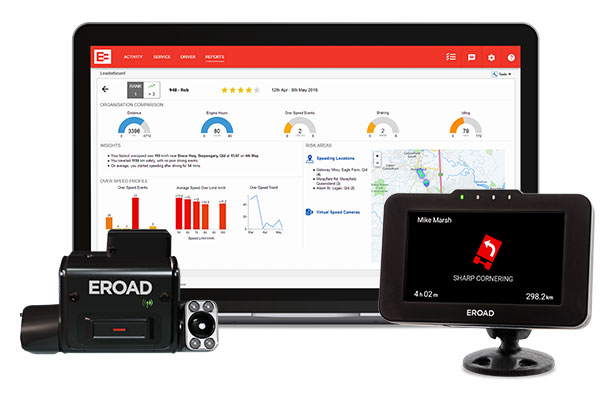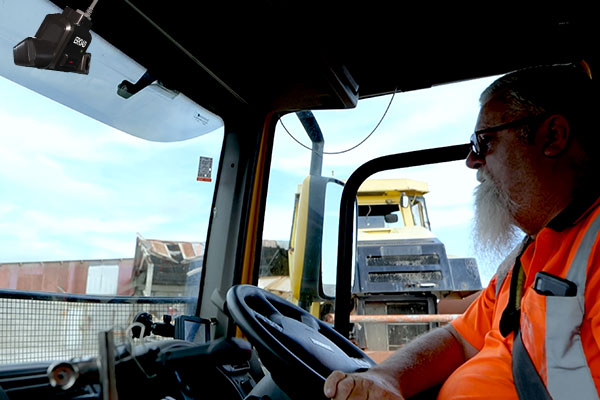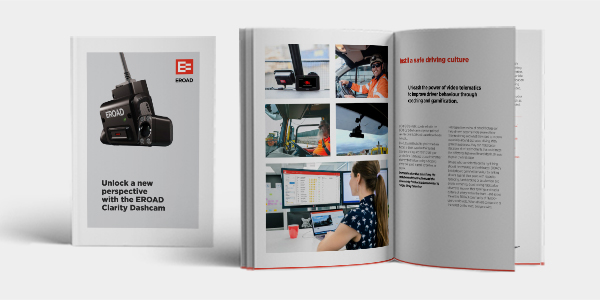How dashcams reduce distracted driving
How dashcams reduce distracted driving
Outfitting commercial fleets with video technology can save lives and protect your business.
On 10 August 2016, the Houghton family was returning from a camping trip in two cars: Mark Goldsmith and his son Jake in one car and the rest of the family – Tracy and her sons Ethan and Joshua and Aimee, Mark’s daughter – in another right in front of them.
While sat in traffic along England’s A34 artery, disaster struck: Truck driver Tomasz Kroker ploughed into Mark’s car, igniting a horrific chain reaction. Mark’s car was shunted into the vehicle containing the mother and three children, who all died instantly when their car was forced underneath a truck in front, compressed to a third of its normal size.
Dashcam footage showed that Kroker had been scrolling through music selections on his mobile phone at the time, so distracted that he barely looked at the road for almost a kilometre. Kroker, who was traveling at 80 kmph, received a jail sentence of 10 years.
While it may be tempting to judge, who among us hasn’t let our attention wander while behind the wheel? It’s important to realise that things like this could happen to any one of us – with tragic, irreversible consequences – unless we do everything we can to curtail distracted driving.
What do we mean by distracted driving?
According to a report by the Bureau of Infrastructure, Transport and Regional Economics (BITRE), distracted driving will be a key cause of the increase in road fatalities and serious injuries in Australia between now and 2030. In spite of this alarming projection, many fleets have no stipulations around distracted driving articulated in their safe driving policy.
In a nutshell, distracted driving falls into four broad categories:
- Taking your eyes off the road
- Taking your hands off the wheel
- Being distracted by noises
- Being mentally elsewhere (e.g. daydreaming, fatigue)
These first two will be most familiar and are the ones that occur most often on a day-to-day basis. Fortunately, they’re also the easiest to correct. Examples include:
- Mobile phone use
- Interacting with radios, CDs, iPods, or GPS devices
- Eat, drinking, or smoking while driving
- Reaching for items
- Conversations with other passengers
- Admiring scenery

Perhaps unsurprisingly, mobile phone use is by far the biggest contributor, as four of the most common distracted driving activities can now be done on a smartphone: texting, talking, using a navigation system, and adjusting music.
How serious of a problem is distracted driving?
The Australian Naturalistic Driving Study found that Australian drivers were distracted by something other than the road ahead of them 45 percent of the time, or once every 96 seconds.
Driver distraction causes approximately 16 percent of serious crashes on our roads, and according to Roads and Maritime Services NSW, as many as one in 10 fatalities have been directly attributed to driver distraction. In 2019, there were 1,195 road crash deaths, up 5.3 per cent from 2018, so that’s about 120 people a year. As previously mentioned, BITRE expects that number to increase further, due to the widespread use of mobile phones.
Distracted driving is clearly a serious problem among the general population, but how does that relate to commercial drivers? Driver inattention or distraction caused 39 percent of major truck incidents in 2019, and heavy trucks are disproportionately involved in all casualty crashes: approximately 16 percent of fatalities and 4 percent of injuries. Between June 2019 and June 2020, 157 people died in crashes involving heavy trucks. When you consider that about 80 percent of these crashes are actually caused by other motorists – and they’re usually the ones who don’t walk away from the accident – you can see that distracted driving is every road user’s problem.

Under the Chain of Responsibility, operators in the supply chain, including fleet managers and customers, are legally responsible for risk reduction and must do all that is reasonably practicable to ensure safety. The confusing part? They leave it up to the parties to determine exactly how to do that. If you’re wondering how you can definitively demonstrate CoR compliance and avoid fines of up to $20,000 per breach, telematics solutions like EROAD’s Ehubo2 and the EROAD Clarity Dashcam provide the answer.
How does driver behaviour change with a dashcam?
Recent studies show that continuous feedback is fundamental to changing driving behaviour.
With Ehubo2, drivers and fleet managers have access to a wealth of information, including overspeeds and harsh braking, but the device still doesn’t provide the full picture that a dashcam can: specifically, what happened immediately before, during, and after an incident, both in terms of in-cab driver behaviour and external factors beyond their control.
Fully integrated with Ehubo2, EROAD Clarity’s dual-facing camera is on whenever the truck is, but only a harsh driving event will trigger a video to be automatically sent to the MyEROAD online platform for review.
While it’s natural for drivers to feel some trepidation around being visually monitored, once they understand that dashboard cameras are proactive, not punitive – and there for their own protection from liability, injury, and death – getting onboard will become a no-brainer.

The goal is education, prevention, and, in cases where an accident has happened, proof of the facts. Footage from the last 40 hours of driving can also be retrieved as needed, and the driver can record and send video on demand at the push of a button.
Retrospective review of footage – including examples of commendable defensive driving – can help drivers become more aware of how they’re driving and what they can do to improve. That’s where MyEROAD Replay comes in handy, allowing you to combine driver performance data with video footage. With greater awareness, your drivers can make better decisions at critical moments that could mean the difference between life and death. Or avoid them in the first place.
Retrospective review of footage – including examples of commendable defensive driving – can help drivers become more aware of how they’re driving and what they can do to improve. That’s where MyEROAD Replay comes in handy, allowing you to combine driver performance data with video footage. With greater awareness, your drivers can make better decisions at critical moments that could mean the difference between life and death. Or avoid them in the first place.
Now that you can actually see driver distractions in action, you can implement a safe driving policy that is specific, measurable, achievable, relevant, and time-bound, known by the acronym “SMART” in employee-performance management.
By outfitting your fleet with dashcams and making incident footage review part of regular team coaching, you can demonstrate ahead-of-the curve compliance with the Chain of Responsibility and cement your reputation as a company committed to safety. With the passage of time, we can expect that cameras will increasingly be recommended, if not required, by insurers.
See what’s going on with your fleet, only when you need to.


